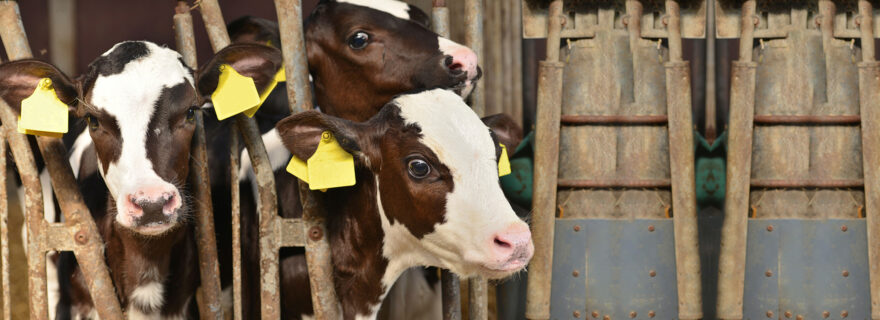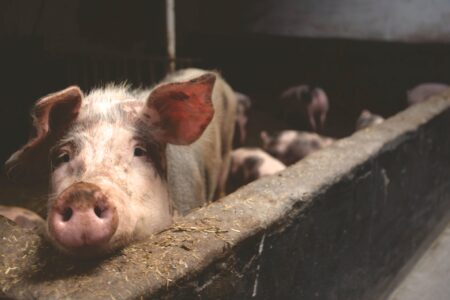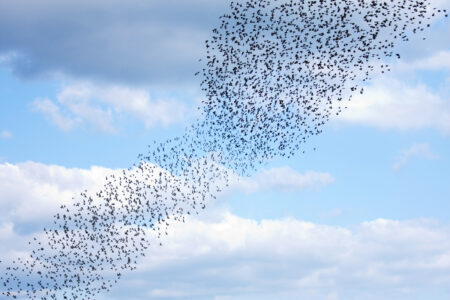Why zebras don’t get ulcers, but cows do: the physiological effects of psychological stressors in calves
The stress response system is highly adaptive, and has kept humans, zebras, and calves alive through history. But today it leaves humans in distress, whereas zebras are fine. And calves suffer stress as humans do… but for a different reason: humans themselves.
Why it is illegal to say ‘dairy causes serious animal suffering’
A recent court ruling forbade animal rights association Dier&Recht (defendant) to display billboards with the text “dairy causes serious animal suffering by taking calves away from their mothers immediately after birth”. Most of the animal rights champions’ case was built on the “Updated Inconvenience Analysis”, an investigation into animal discomfort. This evidence was disputed by Agractie (plaintiff), which claimed that it was not possible to distinguish what proportion of the calves’ suffering was caused by taking them away immediately after birth, or by taking them away at all. The judge concurred and ruled in favour of Agractie.
Professionals seem to agree that calves suffer. But animal suffering was not disputed here and is apparently not problematic enough to be entirely prevented. From a psychological perspective, however, there seems to be more going on, leading calves to suffer from several diseases, like ulcers, that they would not normally contract. The development of ulcers has previously been blamed on the wrong kind of food and medication, but those familiar with Dr. Robert Sapolsky might think of a different cause: stress.
Why zebras don’t get ulcers
Back in 1994, neuro-endocrinologist Dr. Robert Sapolsky published his book ‘Why Zebras Don’t Get Ulcers’, explaining the interaction between stress and immune system functioning. Sapolsky posits that zebras do not get stomach ulcers because they only deal with episodic stress, which they experience when running away from a lion, for instance. Stress is a physiological response which is very adaptive for the survival of all living creatures. However, the enduring stressors of modern life bear no resemblance to the stressors the prehistoric stress response system was evolutionarily developed for. Sustained stress results in numerous psychological and physiological health problems, including ulcers. And as it turns out, not only in humans. Calves raised in the Netherlands suffer the same consequences, and their stressors too are far from natural.
Why calves do get ulcers
Dairy cows, beef cattle, and calves raised for veal have all been found to suffer from ulcers. This may be due not only to the appalling conditions in which such calves grow up, but also to the traumatic experiences they endure and the interaction between these factors.
Calves are taken from their mothers immediately after birth, so as not to get emotionally attached. Cows, however, are a social species and, like humans, become attached to their caregivers. In his book ‘The Boy Who Was Raised as a Dog’, the psychiatrist Dr. Bruce Perry describes how the early experiences of a caregiver’s warmth and love are essential for successful development. Lacking this attachment can have detrimental consequences for the functioning of a child. This is hardly different for cows (and many other mammals). It should therefore not be surprising that cattle too show anxiety-related activity, leaving us to wonder why this form of human-initiated child abuse in calves is even condoned.
Both the harsh living environment and the emotional maltreatment cause stress. Stress hormones usually trigger a wide variety of responses designed to help the organism survive, like increasing immune system activity to defend the body from bacteria. Sustained stress, however, can cause immunosuppression, leaving the organism at risk for biological perpetrators. Furthermore, psychological stressors can leave traces that may develop into psychological or physiological turmoil later in life. This bio-psycho-socio interaction illustrates the delicate balance of a well organised stress response system. Factors that influence this interaction range from – on the positive end of the spectrum – a protecting, warm, loving environment and secure attachment to a caregiver, to – on the negative end – stressful and aggravating circumstances, such as being torn away from a caregiver and being denied healthy food or a safe space to live.
Why we treat the animals we love so poorly
The demand for dairy and beef products inherently leads to a surplus of male calves. Beef cattle need to be replaced, and dairy cows need to be gestating to produce milk. Both industries thus favour cows over bulls, and male calves are therefore considered a by-product of the industry, waste. With a 50/50 chance of a calf being male, the question arises of what to do with all these calves. Most of the surplus male calves are transported to veal meat farms, where they are fattened to the age of 9 to 12 months before being slaughtered.
The farmers, veterinarians, and others involved are by no means heartless proponents of maltreating cows: this is simply a problem within the industry for which there seems no clear solution. The problem is not getting people to understand the tragedies involved in meat and dairy consumption. People love animals and are seldom in favour of harming and or killing them. Yet people still consume meat. This meat paradox, and the cognitive dissonance that comes with it, has been analysed before on the Leiden Psychology Blog. In her post Meet the meat you eat!, Lineke Ouwerkerk explained how the presentation of meat and the use of words is related to people’s willingness to eat animals. Currently, dissociating the meat from the animals seems to be the marketing strategy, and that is similar to what Dier&Recht was trying to address for dairy products.
Resolving cognitive dissonance
Dier&Recht endeavour to solve this problem. By informing the public on the atrocities involved in dairy production, they try to break the cognitive dissonance and moral conflict so many suffer from. Their aim is for more people to use alternatives to dairy products, such as plant-based milks, which they hope will lead to lower dairy consumption and therefore fewer surplus calves. It stands to reason that an animal rights association should be allowed to inform people of the atrocities animals have to endure. This is at least far more obvious than to allow anyone to let animals suffer. So let Dier&Recht be the ones to try to get people to cut down on dairy consumption. And may this blog add to Dier&Recht’s case that calves do suffer severely at the hand of humans: their suffering is indicated, inter alia, by the ulcers they so unnaturally acquire.





